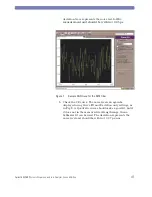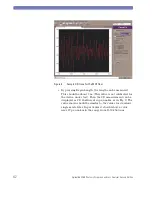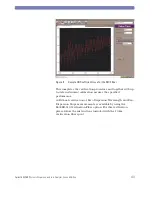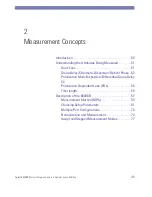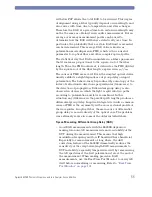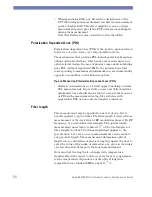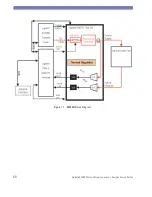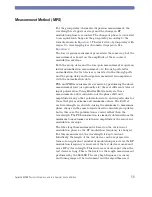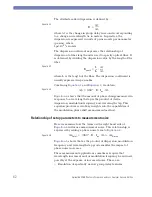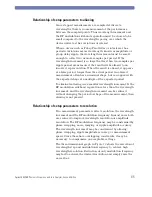
52
Agilent 86038B Photonic Dispersion and Loss Analyzer, Second Edition
• When measuring ripple effects in either GD or IL, the step
size and modulation frequency are each important. If the
step size is too coarse, there is the risk of aliasing the ripple
rate to appear at a longer period. Even when the step size is
sufficiently small to avoid aliasing, The modulation
frequency could be large enough to reduce the apparent
peak-to-peak amplitude of the ripple.
Gain
Gain is a measure of the increase of optical signal level with
transmission through the test device. It is defined as 10 log
(power out/power in) and is always a positive number. In the
field of lightwave telecommunications, gain is produced by
technologies including doped fiber, semiconductor and Raman
amplifiers.
The 86038B displays loss and gain within a single trace,
representing gain with a positive sign and loss with a negative
sign.
Group Delay/Chromatic Dispersion/Optical Phase
Mathematically, the group delay of a component, fiber or
network is proportional to the derivative of optical phase of the
transmitted signal with respect to optical frequency. More
intuitively, group delay is the time required for information in a
signal (that is, any specific point on the modulation waveform)
to travel the length of the optical path. By contrast, the phase
delay is the time required for a point on the unmodulated
optical carrier wave to travel the length of the optical path. The
86038B measures the group delay, not the phase delay.
The group delay of most optical fiber and devices varies with
wavelength, a phenomenon referred to as chromatic dispersion.
Mathematically, the chromatic dispersion is the second
derivative of the optical phase with respect to optical frequency.
In conventional terms, the chromatic dispersion at a given
wavelength is simply the local slope of the curve of group delay
versus wavelength, expressed in picoseconds per nanometer
(ps/nm). In a non-dispersive medium the group delay curve is
independent of wavelength and the group and phase delays are
equal.
The chromatic dispersion coefficient at a given wavelength is
defined as the chromatic dispersion at that wavelength divided
by the length of the fiber, expressed in ps/(nm x km).
Summary of Contents for 86038B
Page 1: ...Agilent 86038B Photonic Dispersion and Loss Analyzer User s Guide ...
Page 4: ...4 ...
Page 20: ...20 Agilent 86038B Photonic Dispersion and Loss Analyzer Second Edition ...
Page 34: ...34 Agilent 86038B Photonic Dispersion and Loss Analyzer Second Edition Figure 2 b Rear Panel ...
Page 78: ...78 Agilent 86038B Photonic Dispersion and Loss Analyzer Second Edition ...
Page 92: ...92 Agilent 86038B Photonic Dispersion and Loss Analyzer Second Edition ...
Page 202: ...202 Agilent 86038B Photonic Dispersion and Loss Analyzer Second Edition End Sub ...
Page 348: ...348 Agilent 86038B Photonic Dispersion and Loss Analyzer Second Edition ...
Page 349: ......




